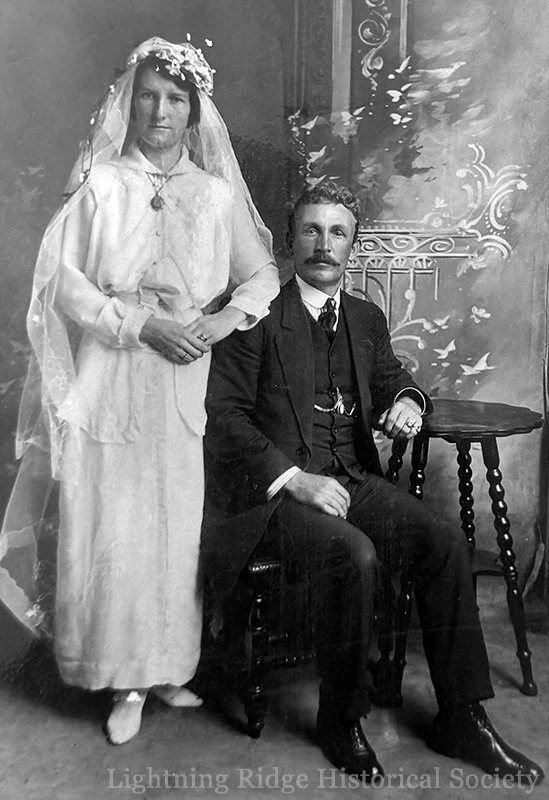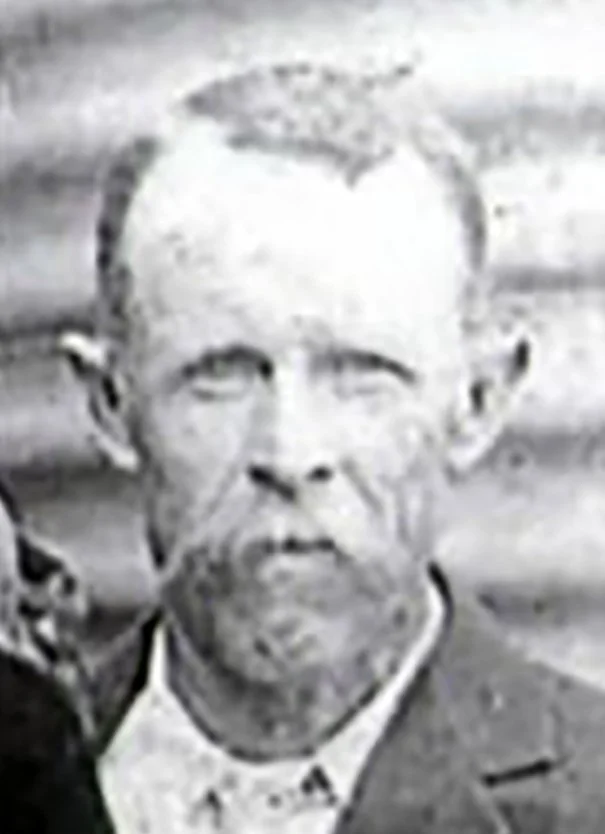Snowy Brown & Tom Urwin’s Shallow Ground
Snowy Brown and Kitty Regan.
Snowy Brown & Tom Urwin’s Shallow Ground is an opal field located on the western slope of the Four Mile ridge, extending down toward the Angledool stock route. Discovered in 1915, it produced some of the best black opal from shallow depths between one and nine feet.
Tom Urwin.
The first strong trace came from Jim “Rio” O’Connell, who had watched the rush die down before deciding to sink a shaft on a patch of untouched ground. He found a pocket of red and orange on black and sold £500 worth before involving two others who allegedly ratted the claim while O’Connell was at the pub. Not long after, Albert Dominick found a massive opalised mussel shell on a neighbouring block, one of the largest ever recovered at Lightning Ridge at that time.
Tom Urwin and his brother-in-law, Ted “Snowy” Brown (after whom the field is named) had pegged a claim directly below Dominick. Their mine had an ash-like seam just under the roofline that carried clean, rich black nobbies, many with vibrant red and harlequin patterns. To avoid drawing attention, Urwin hid the opal in an oatmeal bag under his coat and quietly dropped it into a sugar bag strapped to his bicycle each night. In total, Brown and Urwin sold opal worth around £5,000, huge for the time.
Other claims were less successful. Jim Cowan and Billy Gale filled a four gallon drum with black nobbies, but without hint of colour among them. Jim O’Donnell sold £500 worth from his claim, while other miners found only trace material. Many shafts were sunk during the rush, but most miners left disappointed.
According to The Lightning Ridge Book by Stuart Lloyd, the field produced £36,600 in total by 1967.
Article: Research by Russell Gawthorpe and Leisa Carney, edited by Russell Gawthorpe. LRHS research compiled by Len Cram and Barbara Moritz. Sources: The Lightning Ridge Book, Stuart Lloyd, 1967, p. 61; Lightning Ridge - The Home of the Black Opal: Unique to the World, Gan Bruce, 1983, pp. 71-72; Discover Opals: Before and Beyond 2000 with Surface Indications, Stephen Aracic, 1996, p. 146.


